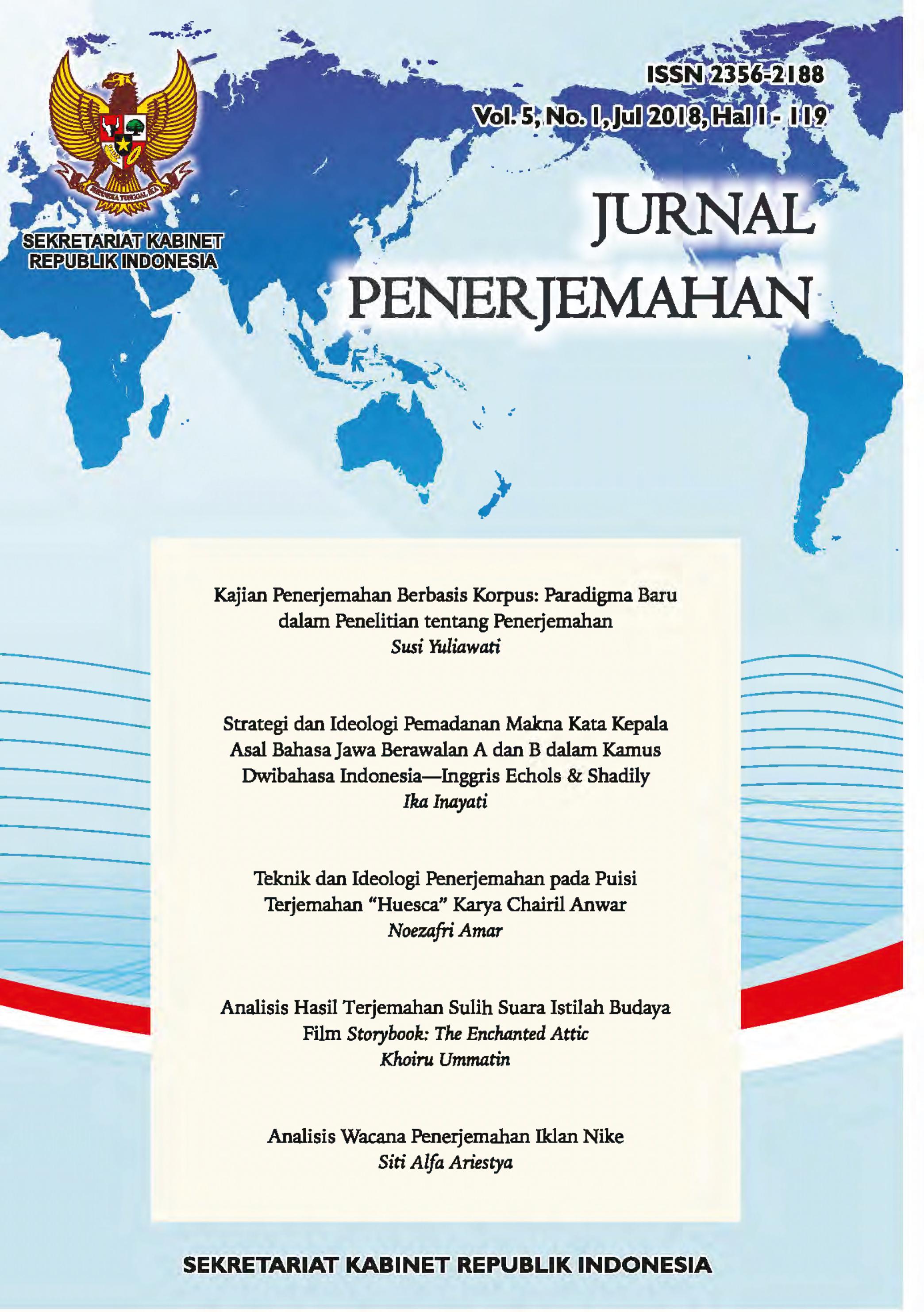Strategies and Ideologies in Meaning Equivalence of Javanese Headwords Beginning with A and B in The Indonesian-English Bilingual Dictionary by Echols & Shadily
Abstract
In an Indonesian-English Dictionary, numerous headwords are found to originate from local languages, especially from Javanese. On the other hand, not all headwords of Javanese origin could be translated into English. To overcome the problem of absence of translation equivalents, consciously or unconsciously, the lexicographer, in this case the translator, would apply strategies in the translation process. Out of the strategies, the tendency of the lexicographer, whether leaning more towards the target or source language, would be revealed. The tendency, furthermore, would show the translation ideology of the translator and the publisher. The object of this research is Echols and Shadily’s Indonesian-English Dictionary, owing to the fact that the dictionary is considered to be the oldest of its type in by the people. The research is limited to the Javanese origin headwords beginning with the letters A and B. Javanese is chosen since it contributes the most to the development of Indonesia dictionary. Meanwhile, the headwords beginning with the two first letters of A and B are chosen to begin the research on the whole headwords of Javanese origin in the dictionary. By using the observation and descriptive methods, 127 headwords of Javanese origin can be found in the dictionary. After being classified and analized, 57% of the headwords are translated through direct translation, 34% through descriptive translation, 5,5% through modulation, 0,8% through idiomatic translation, and 2.3% through adaptation strategy. The translator has changed the point of view from general to particular and vice versa on applying the modulation strategy. Thus, the ideology of the translation that are applied on the 127 Javenese origin headwords with the beginning letters of A and B are domestication.
Keywords: bilingual dictionary, translation strategy, translation ideology

